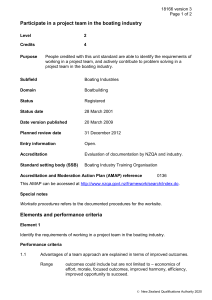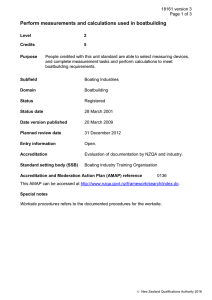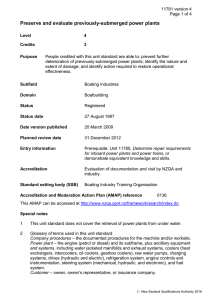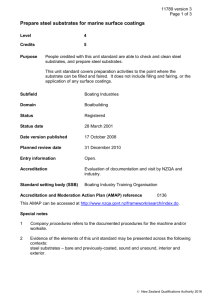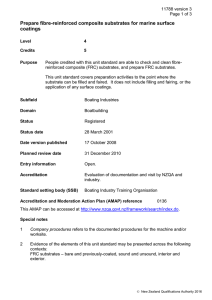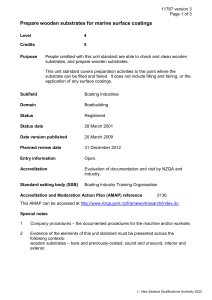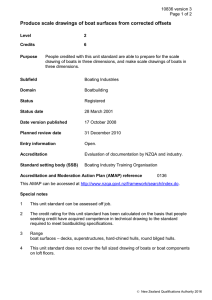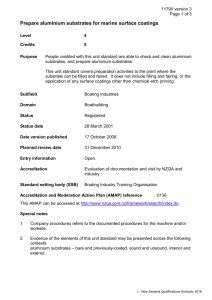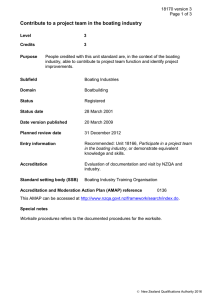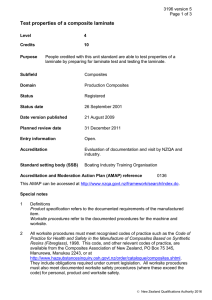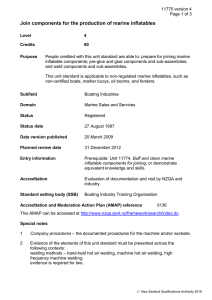Anti-foul a boat
advertisement
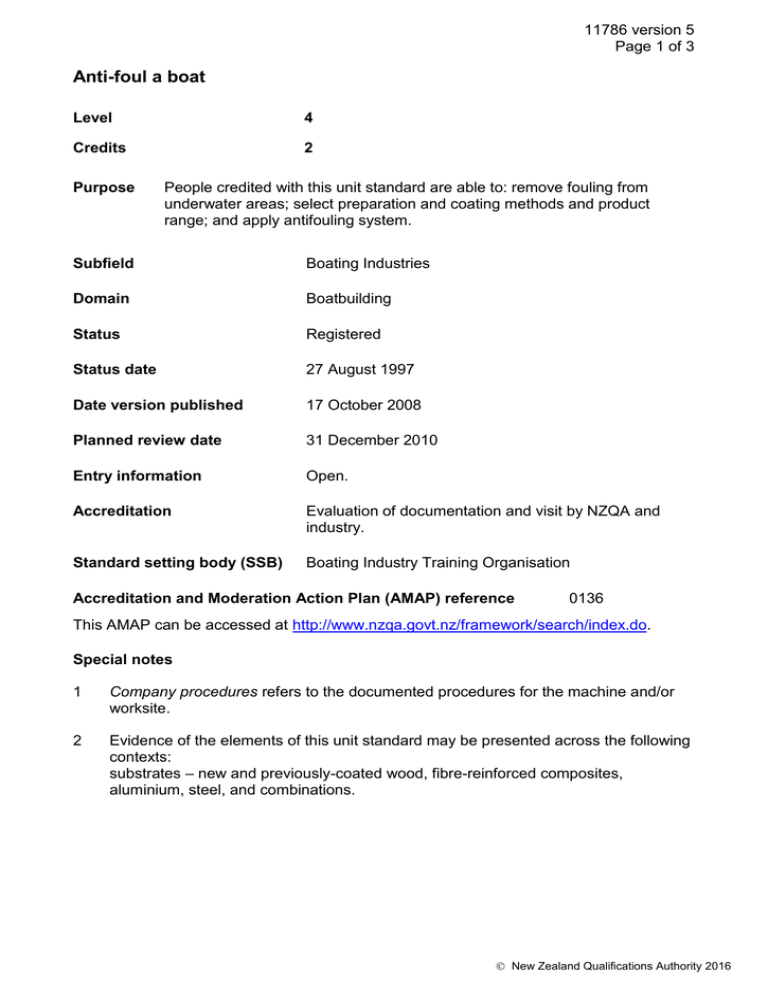
11786 version 5 Page 1 of 3 Anti-foul a boat Level 4 Credits 2 Purpose People credited with this unit standard are able to: remove fouling from underwater areas; select preparation and coating methods and product range; and apply antifouling system. Subfield Boating Industries Domain Boatbuilding Status Registered Status date 27 August 1997 Date version published 17 October 2008 Planned review date 31 December 2010 Entry information Open. Accreditation Evaluation of documentation and visit by NZQA and industry. Standard setting body (SSB) Boating Industry Training Organisation Accreditation and Moderation Action Plan (AMAP) reference 0136 This AMAP can be accessed at http://www.nzqa.govt.nz/framework/search/index.do. Special notes 1 Company procedures refers to the documented procedures for the machine and/or worksite. 2 Evidence of the elements of this unit standard may be presented across the following contexts: substrates – new and previously-coated wood, fibre-reinforced composites, aluminium, steel, and combinations. New Zealand Qualifications Authority 2016 11786 version 5 Page 2 of 3 3 The following apply to the performance of all elements of this unit standard: a All required equipment must be set up, started up, operated, and shut down in accordance with company procedures; b All work practices must meet recognised codes of practice and documented worksite health and safety procedures (where these exceed code) for personal, product, and worksite health and safety, and must meet the obligations required under the Health and Safety in Employment Act 1992 and subsequent and delegated legislation; c All work practices must meet recognised codes of practice and documented worksite environmental procedures (where these exceed code) for personal, product, and worksite environmental matters, and must meet the obligations required under the Resource Management Act 1991 and subsequent and delegated legislation. d All work practices must meet documented worksite quality management requirements. These include documentation of activities, events, and decisions. 4 This unit standard can be assessed on job. Elements and performance criteria Element 1 Remove fouling from underwater areas. Performance criteria 1.1 Selection of removal method is matched with substrate and anti-fouling in current use. Range removal methods – sanding, water blasting, paint stripping, burning off. 1.2 Specified surface is completely clear of fouling. 1.3 Surface is clear of imperfections and the substrate is unbroken. Element 2 Select preparation and coating methods and product range. Performance criteria 2.1 Methods and product range are matched with intended use, customer's requirements, and regulatory requirements. Range intended use – operating environment, boat speed, amount of time stationary, water temperature. New Zealand Qualifications Authority 2016 11786 version 5 Page 3 of 3 2.2 Surface preparation and coating methods are matched with substrate, product range, and customer's requirements. Range preparation methods – checking substrate integrity, repairing substrate, filling and fairing, sanding, undercoating; coating methods – brushing, rolling, spraying. Element 3 Apply antifouling system. Range undercoat and antifoul. Performance criteria 3.1 Antifoul is applied in accordance with manufacturer’s specifications and recommendations. 3.2 Protection is provided for areas not required to be coated. 3.3 Application techniques comply with manufacturer’s specifications for dry film thickness. Please note Providers must be accredited by NZQA, or an inter-institutional body with delegated authority for quality assurance, before they can report credits from assessment against unit standards or deliver courses of study leading to that assessment. Industry Training Organisations must be accredited by NZQA before they can register credits from assessment against unit standards. Accredited providers and Industry Training Organisations assessing against unit standards must engage with the moderation system that applies to those standards. Accreditation requirements and an outline of the moderation system that applies to this standard are outlined in the Accreditation and Moderation Action Plan (AMAP). The AMAP also includes useful information about special requirements for organisations wishing to develop education and training programmes, such as minimum qualifications for tutors and assessors, and special resource requirements. Comments on this unit standard Please contact the Boating Industry Training Organisation training@bia.org.nz if you wish to suggest changes to the content of this unit standard. New Zealand Qualifications Authority 2016
